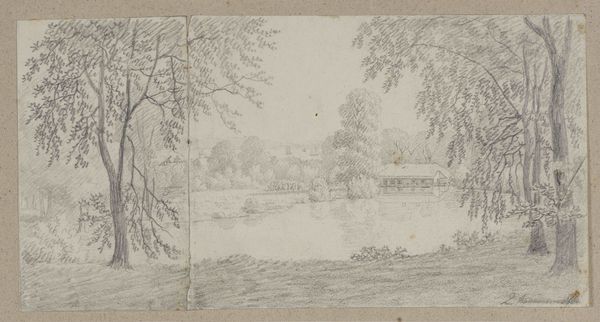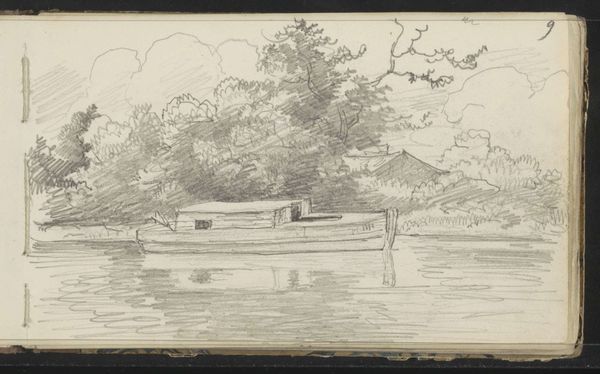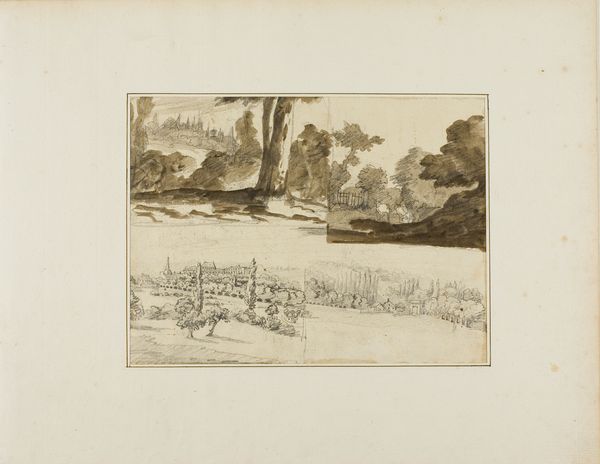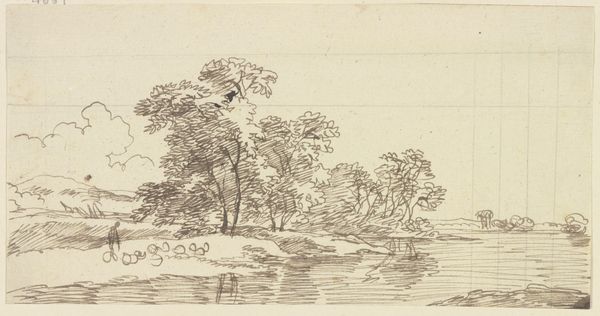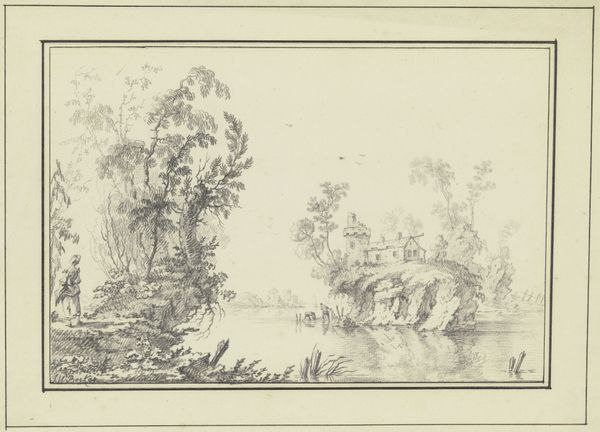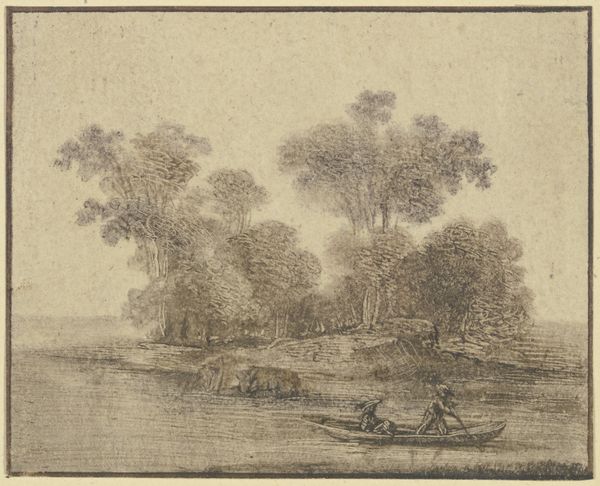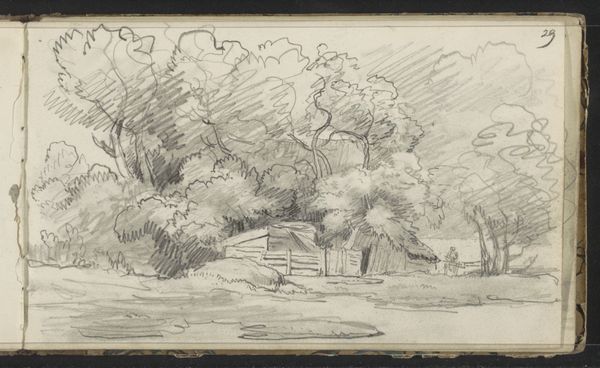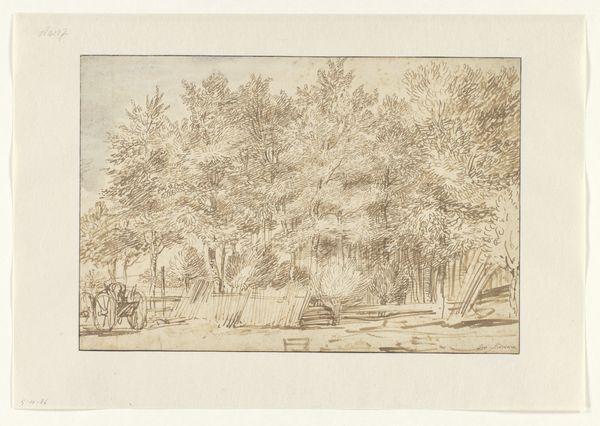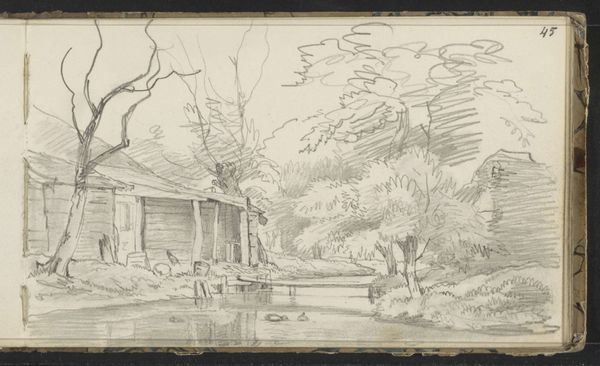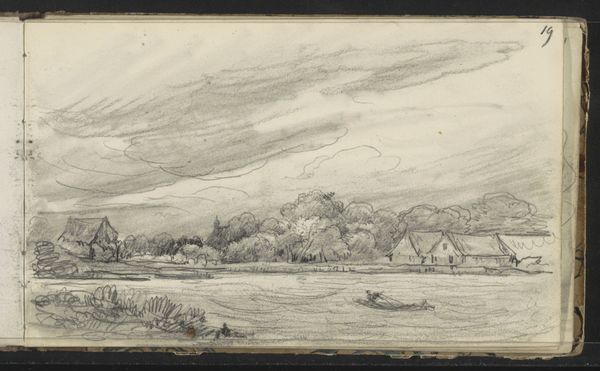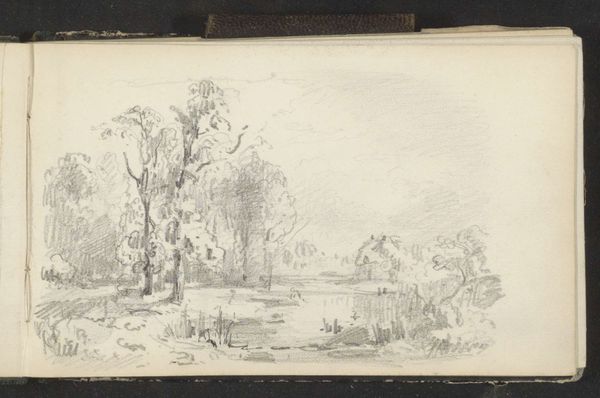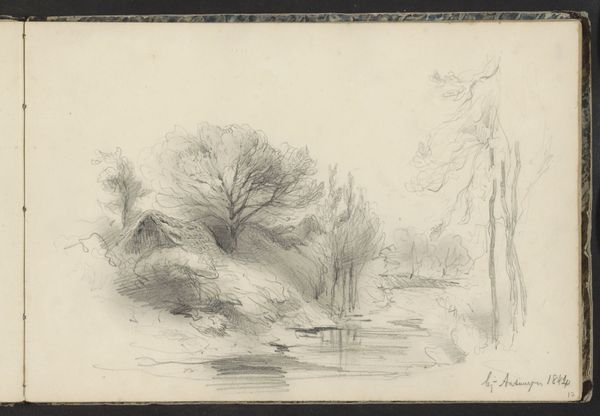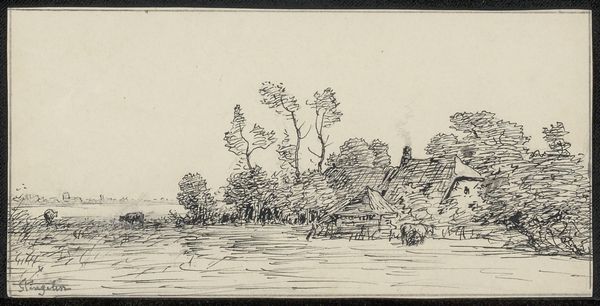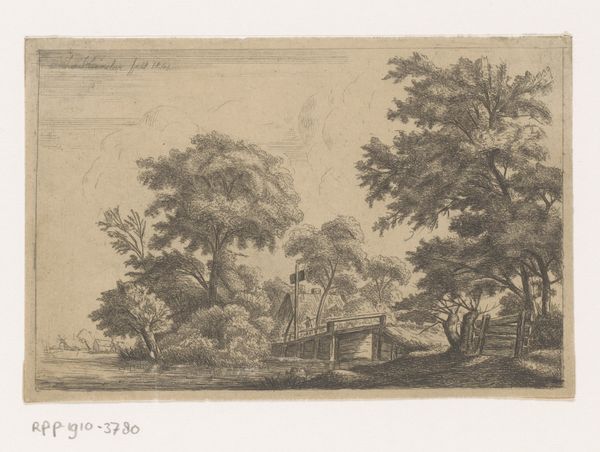
drawing, paper, pencil
#
drawing
#
toned paper
#
quirky sketch
#
pen sketch
#
sketch book
#
landscape
#
paper
#
personal sketchbook
#
ink drawing experimentation
#
romanticism
#
pen-ink sketch
#
pencil
#
pen work
#
sketchbook drawing
#
sketchbook art
Copyright: Rijks Museum: Open Domain
Editor: This drawing, "Landschap met een aangemeerde boot aan een waterkant" by Arnoldus Johannes Eymer, was made sometime between 1803 and 1818. It's done with pencil and ink on paper, and it feels like a quick study from a sketchbook. What strikes me most is how raw and immediate the linework is. How do you see the use of materials contributing to the meaning of this piece? Curator: Well, let’s consider the implications of it being a sketch in a book. This shifts the artistic intention away from the formal exhibition piece towards something more… utilitarian. It shows a maker, Eymer, in direct engagement with his environment, extracting visual data. This particular image exemplifies how the medium and format become intertwined with the artist’s labor, acting as an exercise in observing, selecting, and translating visual information from the real world to a portable format. How does this raw, material immediacy affect our understanding of “landscape” as a genre, traditionally rendered through detailed painting? Editor: I see your point. It challenges the idealization often found in landscape paintings, by emphasizing the process. So it's less about the picturesque scene itself and more about Eymer's act of observing and recording his surroundings? Curator: Precisely. Think about the availability of paper, the portability of a sketchbook, and the accessibility of pencil and ink versus the infrastructure required for oil painting. These material conditions democratize artistic production, opening it to those with limited resources or training. Is Eymer representing the landscape, or is he engaging in an act of visual appropriation? Editor: That’s fascinating. It almost feels like the drawing is more about the process of capturing the landscape than the landscape itself. Curator: Exactly! And by understanding the materiality, the 'how' of the image, we also question the traditional boundaries of fine art by investigating labor. What did it mean to produce and consume landscape images during the Romantic period? Editor: This has completely changed how I see this piece. It’s no longer just a landscape drawing but a record of an artistic process rooted in very specific material and social conditions. Curator: Agreed. By looking closely at materials and means of production, we find the work engages with cultural context far more than initially apparent.
Comments
No comments
Be the first to comment and join the conversation on the ultimate creative platform.
